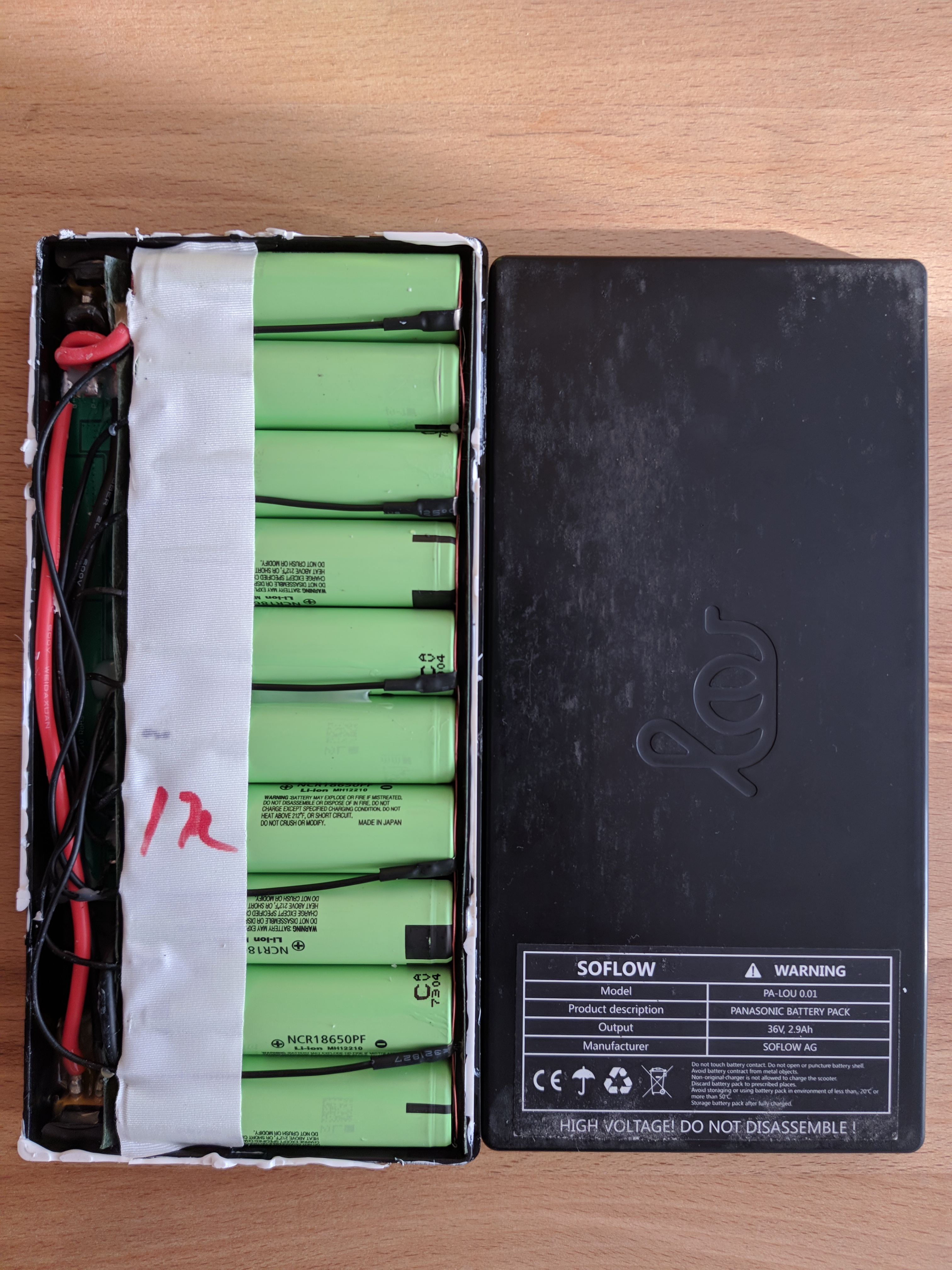Yeah I think that is really weird. I got no good ideas to explain that.
When the motor becomes too slow to generate power the Vesc applies power to hold the motor. That happens when the motors duty cycle goes below 3%. Because at these low speeds the regenerative power would be so low that the brakes would have no effect.
@Maxid does the battery have a BMS?
There is a PCB inside yes. But I guess it is charge only.

These are awful cells for electric longboards. Specs say Max discharge 10A and max charge 2A. But anyway for the moment my best guess is that the motors don’t generate more power at these low speeds with that you tested it. Or the BMS shuts down and the voltage rises too high. In 3.102 there is a feature that starts to reduce the brake current when the voltage is 1V belo the max voltage (57V by default). Maybe you can send me the logs.
holy…someone rly used these in a skateboard, let alone 1p…wtf…even the LG HE2 are better and cheaper.
A tragic product… Even if their motors would output half of the advertised rating, they would still drain 40A from a 10A rated battery. That is unscrupulous product design.
These are quality cells. Panasonic NCR18650PF. I have no idea why someone would use them on an eskate though as they are low current and not that cheap.
Nobody knows - I am thinking of upgrading to 30Q but want to figure this behavior out first. These cells are also the reason why I said earlier that I don’t care about their health.
No since the battery min is not the issue here. the battery could take more energy (easily double of what it currently does) but the motor is not delivering that energy.
oh, thanks for the explanation 
Not in this case, the motor creates the breaking force, then you can reduce this with vesc settings to be the max safe level for your battery. If your motor does not create enough back voltage changing the battery will make no difference.
In most of the diy setups on this forum the limiting factor is the battery charge rate. Large dual motors with gear reduction.
Doesn’t the VESC short-circuit the motor once the motor’s ERPM drops below the configured ERPM level, to get that last intense brake at near stopping speed? I’m pretty sure it justs puts all low-side FETs on in that point. So it isn’t actually using any power, as it’s just recirculating the motor’s EMF back to itself. Same effect as trying to turn a motor by hand while short-circuiting the phase wires together. This is not the same as trying to drive the motor in reverse.
And the current sensors detect this and that’s what is visible in the logs as positive current at braking.
I suppose this is on the 4.xx HW? With it’s low-side current shunts. on 6.xx HW they’re high-side shunts.
Yeah it’s a Focbox so 4.12 based
Hey maxid - out of curiosity and since I ran into a very similar challenge (same vesc with Lou 1.0 single hub): could you increase your breaking torque by changing to the 30Qs significantly despite the challenge of the vesc not pushing the maximum current back to the batteries while braking? I wanted to test a 6s2P Lipo Setup next to see if higher current draw abilities does improve braking in my setup. Thanks in advance!
I did not go the 30q route but changed the setup to a belt drive (my commute is/was uphill and the gearing just made sense)
Thanks mate! Guess I will need to test with the Lipos then to see if there is any effect - belt drive is an option I considered too - just wanted to try to keep the stealth look first with less maintenance 